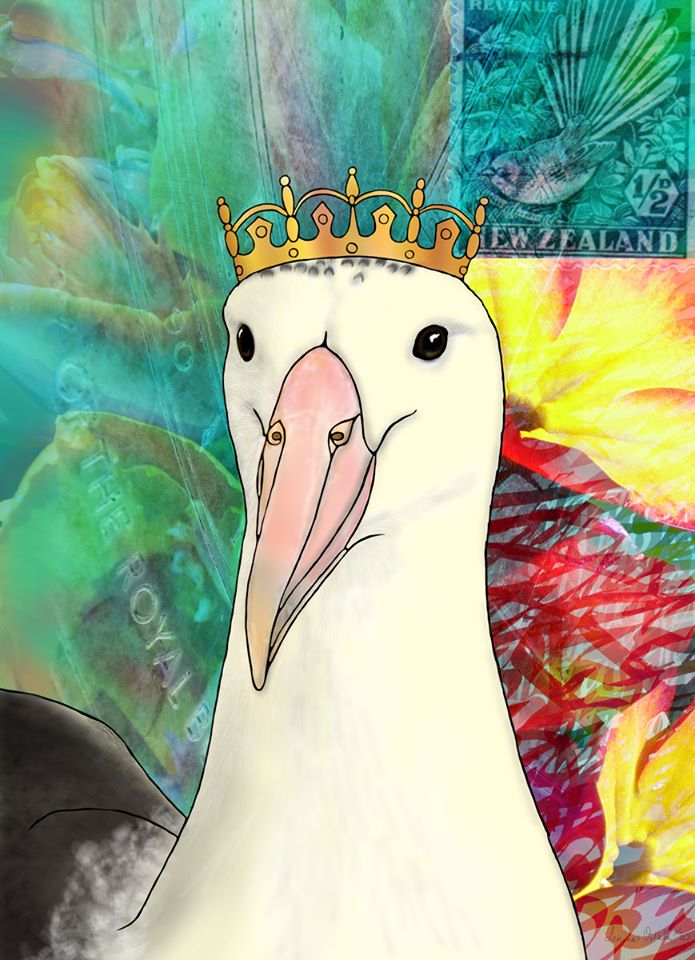 Northern Royal Albatross by ABUN artist Lenina Villela for ACAP
Northern Royal Albatross by ABUN artist Lenina Villela for ACAP
Thirty-three chicks of the 2023/24 breeding season have left the mainland colony of globally Endangered and Nationally Vulnerable Northern Royal Albatrosses Diomedea sanfordi at Pukekura/Taiaroa Head near Dunedin, North Island, New Zealand, according to a Department of Conservation media release.
“Coastal Otago ranger Sharyn Broni said it was a fantastic breeding season, equalling last year for the most chicks successfully fledged in a season.” Last year, when 33 chicks also fledged, was the then best breeding season; the previous highest number of chicks fledging was 30 in the 2020/2021 season. The colony has grown from one breeding pair in 1937 to more than 60 pairs in 2024. (click here). One chick died due to ingesting plastic regurgitated to it by a parent.

The 2023/2024 Royal Cam chick (named Kiwa) fledged on 23 September with a GLS (and colour band) fitted, photograph from Department of Conservation
“We’re also researching where the fledging toroa go with two types of trackers. Global Location Sensors (GLS) were fitted to 20 fledglings, to record location data for three years. GLS tags record ambient light level to determine the birds’ approximate location. The data [are] stored so we will recover [them] from the tags when the birds return to the colony in four to ten years. Global Positioning System tracking tags were fitted to another 10 fledglings, thanks to crowdfunding by the Royal Albatross Centre. These trackers are solar powered and give us accurate, real-time updates of the bird’s position for about a year. Some of this year’s fledglings have almost made it to South America already.”
![]()
Recently fledged Northern Royal Albatrosses are now being tracked across the Pacific Ocean to South America
Read more here.
John Cooper, Emeritus Information Officer, Agreement on the Conservation of Albatrosses and Petrels, 01 November 2024

 English
English  Français
Français  Español
Español